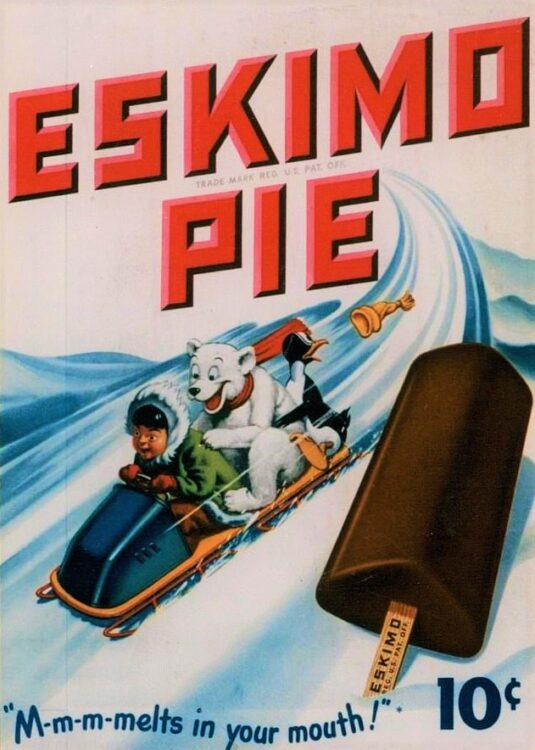The makers of Eskimo Pie ice cream have announced the new name for their brand, losing a 100-year-old trademark which is now considered racially insensitive.
From 2021 Eskimo Pie will be known as Edy’s Pie – a tribute to one of their founders, Joseph Edy.
In 1928 Edy and William Dreyer decided to join forces to manufacture ice cream, beginning a company which owns Eskimo Pie and is now known as Dreyer’s Grand Ice Cream, in turn owned by Nestle.
‘Our mission at Dreyer’s Grand Ice Cream is to bring joy to everyday life with ice cream and we look forward to our Edy’s Pie ice cream bars continuing to do just that,’ said Elizabell Marquez, head of marketing for Dreyer’s Grand Ice Cream.
Marquez also said that the company has ‘paused production’ of the Eskimo Pie until the new brand rolls out, which Dreyer’s expects to occur in early 2021.
Eskimo Pie has not faced strong critcism over its name but is followng in the steps of other other brands with racially insensitive logos or names that have been updating their image.
Dreyer’s Grand Ice Cream Holdings announced in June that it was changing its name, following a lead set by Aunt Jemima, Uncle Ben’s and Mrs Butterworth – all of whom are changing their branding.
The only other brand to unveil a new name so far is Uncle Ben’s, which is now calling itself Ben’s Originals.
‘We are committed to being a part of the solution on racial equality, and recognize the term is derogatory,’ Marquez said at the time.
‘This move is part of a larger review to ensure our company and brands reflect our people values.’
Eskimo is commonly used in Alaska to refer to all Inuit and Yupik people, but many associate it with racist colonizers who settled in the Arctic and used the term.
The brand logo features an indigenous child with a fur-lined hood and mittens.
Eskimo Pie was invented in 1922 by Christian Kent Nelson, of Ohio.
Nelson found inspiration from a small boy who came into his confectionery store and could not choose between an ice cream and a chocolate bar.
Nelson asked why he did not buy both.
The boy replied: ‘Sure I know — I want ’em both, but I only got a nickel.’
Nelson worked for weeks to find the right way to stick melting chocolate to ice cream, archivist Maurita Baldock writes, and found that cocoa butter was perfect.
He immediately set about producing 500 bricks.
In 1922 The New York Times reported that Nelson, then 29, was making $30,000 a week in royalties from sales of the product.
‘Probably no innovation of recent years designed to meet the cravings of a sweet tooth has met with such instantaneous success in New York, Chicago and other cities,’ The Times reported.
Also in June the owners of Cream of Wheat, Uncle Ben’s rice and Mrs Butterworth’s all said they would be reviewing how the brands’ products are packaged.
Quaker Oats said it would retire the name and image of Aunt Jemima, acknowledging that the logo of the pancake mix and syrup brand, a grinning black woman, was based on a racial stereotype.

